The content of the article
Rhubarb has been widely used in cooking, cosmetology and traditional healing. Asian countries and the American people use the plant on an even larger scale, and this is not surprising. Rhubarb is cultivated for industrial purposes, then it is used for the preparation of medicines, cosmetics, seasonings. On this basis, many are interested in the beneficial and harmful qualities of the plant. Let's talk about them in more detail.
Composition of rhubarb
The most commonly used plant root, which is pre-dried and crushed. About 90% of water is concentrated in rhubarb, which causes rapid digestibility after ingestion.
Also, the plant accumulates poly-and monosaccharides, starch, fiber and other dietary fibers, pectin, chrysophane, glycosides.
Rhubarb refers to the champions among plants in which there is a lot of organic acids.So, we are talking about apple, ascorbic, amber, etc.
The vitamin complex consists of beta-carotene, thiamine, retinol, niacin, riboflavin, tocopherol, vitamins C and K. For these enzymes, rhubarb surpasses the notorious currants and apples.
The plant is not deprived of macro-and microelements. Of particular value is potassium, copper, phosphorus, zinc, calcium, iron, manganese, selenium, magnesium.
Many may think that such an extensive list of chemicals suggests a high calorie content. However, this figure is only 13 Kcal. For comparison, greens of another type (dill, parsley, etc.) have a higher calorie content.
Useful properties of rhubarb
- Prevents hypoxia of the brain due to the feeding of neurons;
- lowers blood pressure and does not allow it to rise again;
- heals wounds on the mucous membranes of internal organs;
- strengthens nails, bones and teeth;
- increases the protective functions of the body in the offseason;
- compensates for the lack of valuable substances in avitaminosis;
- strengthens eye muscles, increases visual acuity;
- contributes to improved liver function, removes bile;
- facilitates the course of hepatitis;
- restores the skin after burns, psoriasis, other similar ailments;
- strengthens the immune system, reducing susceptibility to bronchitis, pneumonia, ARVI, influenza;
- prophylactic tuberculosis;
- fights tachycardia, bradycardia, arrhythmia;
- used in the treatment of flatulence, dispersion and intestinal atony;
- cleanses the body of toxins, relieves constipation (including chronic)
- effective in inflammation of the gastrointestinal tract;
- increases appetite in adults and children, reducing the likely dystrophy;
- acts as an antispasmodic for pain in the spleen, gall bladder, liver, uterus, kidneys;
- prevents anemia due to a large accumulation of iron;
- helps recover from heart attacks and strokes;
- reduces the number of heart attacks, restores muscle tone;
- promotes weight loss;
- cleans the bladder from neoplasms.
In large volumes, preparations based on the plant root can be dangerous. Therefore, eat petioles in various dishes.
The benefits of rhubarb for men
- The plant is useful to use for men of different age categories.It is known that representatives of a strong half of the population often suffer from heart disease, which develops due to accumulation of cholesterol in the blood.
- Rhubarb removes harmful compounds, gently expands the blood channels, accelerates blood circulation. This reduces the likelihood of thrombosis, varicose veins, cardiovascular ailments.
- Male addictions such as smoking and alcohol are common. Rhubarb cleanses the body of poisons, quickly removes alcohol during a hangover, and prevents lung cancer.
The benefits of rhubarb for women
- The plant is great for use in women. Rhubarb preserves the youth of body tissues and skin in particular. It is good to eat seasoning during the menstrual cycle in order to reduce pain.
- Rhubarb enhances the regeneration processes of the epidermal cells, reducing the number of wrinkles and age spots. The plant is often used to combat hair loss, dandruff, itching, severe greasiness.
- Women in the period of menopause need to take crushed raw materials to reduce the number of tides. Seasoning also supports vision and prophylactic cataracts.
The benefits of rhubarb for pregnant women
- Girls who are in a delicate situation, rhubarb is shown to receive and is salvation. The plant is able to cope with toxemia, which usually appears in the early stages.
- Pregnant women often suffer from intestinal obstruction. Rhubarb normalizes the activity of the digestive system and gently cleanses the body.
- Root is a valuable source of K-group vitamins. This property suppresses the possibility of hemorrhage in the brain, as well as congenital anemia of the fetus.
- Rhubarb lowers blood pressure and brings it back to normal. The absence of jumps warns the likelihood of vascular pathologies in the future baby and his mother.
- High calcium content makes up for the lack of this element in a pregnant girl. This quality will keep bones, nails, hair, teeth in integrity after childbirth. In addition, calcium is responsible for the formation of the skeleton of the child.
The benefits and harm of rhubarb juice
- RV juice has a pronounced sour taste, the composition is effective for cleansing the body and intestines from various parasites, including worms.
- It is not allowed to drink in large quantities,as it contains a high percentage of oxalic acid. Substance after heating forms in crystals and accumulates in the body.
- As a result of this reaction increases the significant risk of arthritis, gout, sand deposits, kidney stones, gall bladder.
- The juice will bring invaluable benefits exclusively raw. The composition must be consumed in small portions. It can be mixed with fresh carrots, celery and fruit. If desired, add a small amount of honey.
- If diluted rhubarb juice with honey and similar fruit or vegetable formulas, you get a fairly tasty and balanced drink.
The benefits of rhubarb in diseases
- Rhubarb leaves effectively help with diabetes. Special enzymes that control insulin secretion in the pancreas have a positive effect.
- Medications based on rhubarb and xylitol normalize blood glucose levels. Often diabetes in patients proceeds along with impaired mineral synthesis. As a result, gout or uric acid diathesis occurs.
- In the case of diagnosing gout, rhubarb should be consumed in small quantities and with extreme caution.In case of non-compliance with the norm, the course of the disease is significantly aggravated due to the postponement of oxalic acid in the body.
- For these ailments, rhubarb can be added to the diet in rare cases. Moreover, the product must be combined with other dishes, such as soup.
Oncology
- British scientists have found that rhubarb is rich in polyphenols. Such enzymes have the strongest anti-cancer effect.
- Studies have shown that by eating a rhubarb extract in a patient for two days in the body, the number of cancer cells was reduced by 2 times.
- In severe lung cancer, the further development of the disease is blocked after 10 days. Regular use of the plant in the usual diet will provide excellent prevention of oncology.
Constipation
- In the fight against chronic constipation, rhubarb root powder can help. The tool is recommended to take at night, as the desired effect occurs after 7 hours.
- Experts recommend using the plant extract alternately with other laxatives. Otherwise, the effect of rhubarb weakens over time.
Hepatitis
- The use of the plant root in any stage of hepatitis can significantly improve the patient's condition and refuse most of the medications taken.
- To prepare an effective tool, you need to pour 60 grams into a small saucepan. dry crushed rhubarb root. Pour raw materials 500 ml. water, turn on the burner to the minimum.
- Tomite product at least a third of an hour. After that, wait for the natural cooling of the broth, strain. The tool should be consumed in 30 ml. before a meal, zajadaya 10 gr. honey
Hurt rhubarb
- Before use, you need to know that not all parts of rhubarb are suitable for use or for therapeutic purposes. Elevated stalks and leaves are considered poisonous. Such a statement is associated with an excess of oxalic acid, which is harmful to the kidneys.
- By keeping such an acid in the root of a plant, it is forbidden to use a product in large quantities during a kidney stone disease. Stewed fruit and rhubarb jam do not count.
- Acids when interacting with calcium form stones. Hence further complications develop with the existing disease. Rhubarb must be harvested in the spring, in a plant practically harmless malic acid prevails.
- It is forbidden to use rhubarb in any form during inflammatory processes of the bladder, bleeding of different nature, peritonitis, cholecystitis, pregnancy and rheumatism.
Rhubarb will bring undoubted benefits to the body with strict adherence to the daily intake. Be careful with chronic ailments, the plant can save you from complications or aggravate the situation.
Video: how to grow and use rhubarb




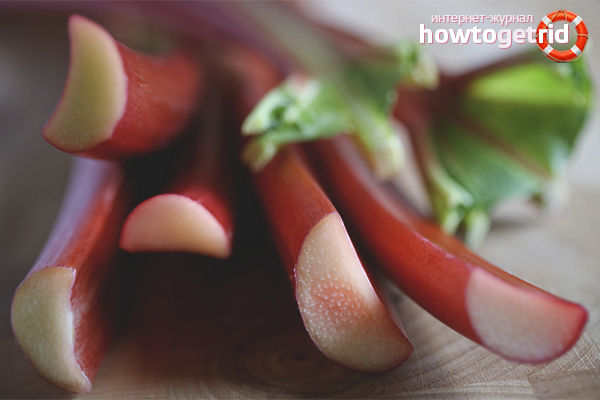


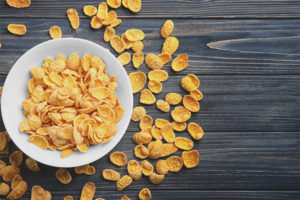


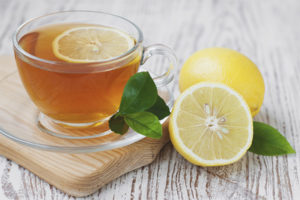
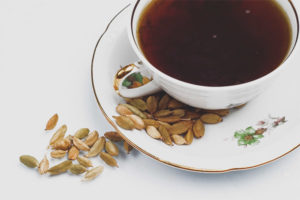
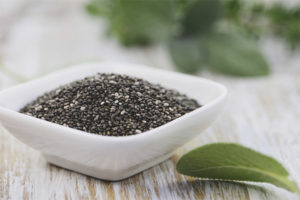
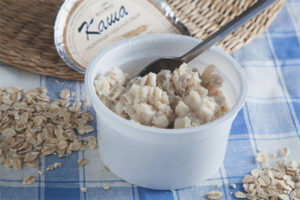
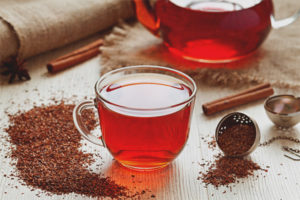
To send